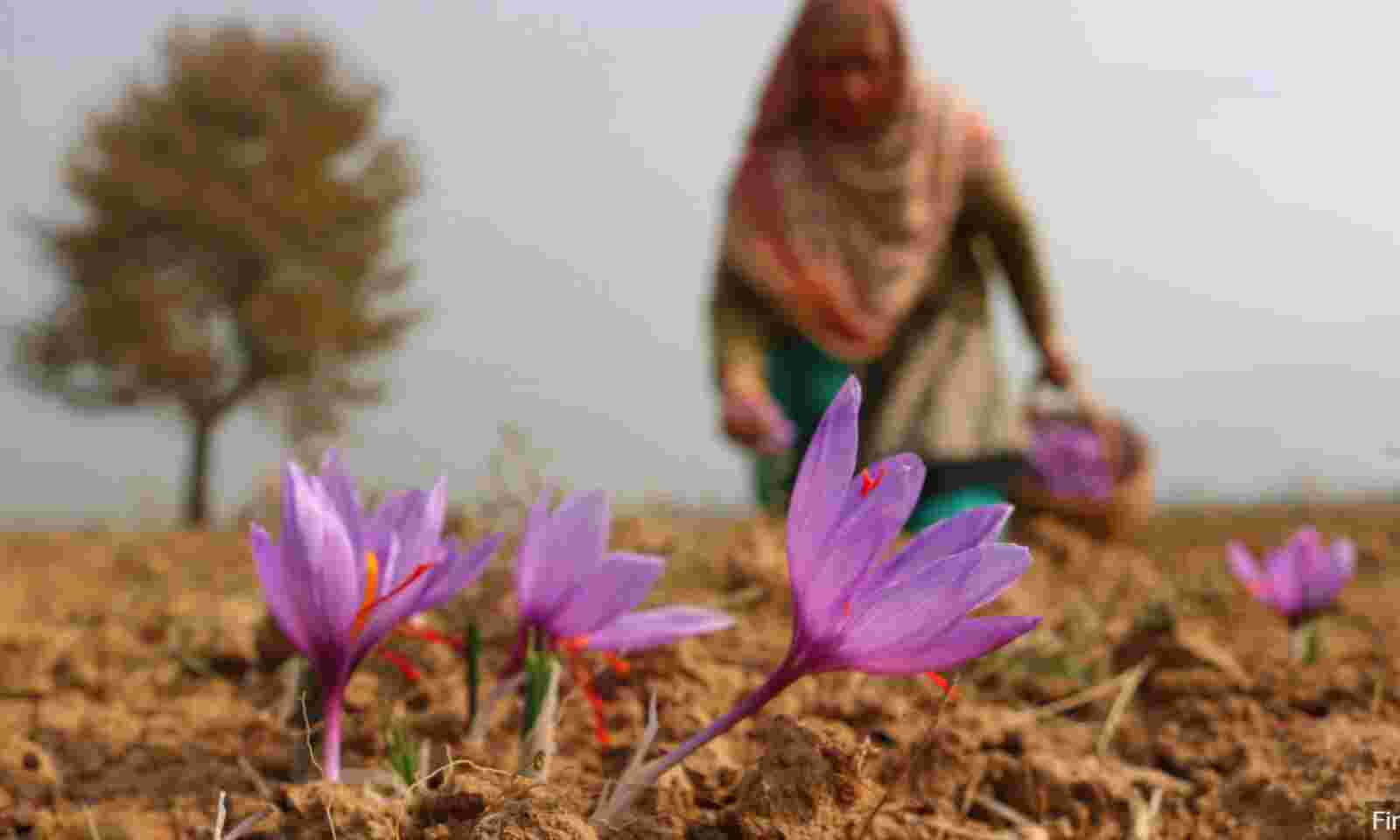
Saffron blooms in Kashmir, Production up by 30%
Amid a sea of saffron bloom, Irshad Ahmad Dar and his family are upbeat as they pick purple flowers one by one in their field at Patalbagh village of Pampore in south Kashmir.
Dar, 33, says the flowers and their saffron stigma this year are of better colour and size as the Valley witnessed timely rains following the cultivation in August. Saffron is one of the world’s most expensive spices and is known as the king of condiments. It fetches between ₹1.5 lakh and ₹2.5 lakh per kg.
“The corm production is good and the plants are getting better. The stigma of the flower is bigger. The overall crop is better. Last year, I harvested 100 tola (1 kg) of saffron and this year it is expected to cross 1.5 kg,” says the young farmer whose family owns around 35 kanals of saffron fields in the district. Dar says this year, he is harvesting 25 grams of saffron from 1kg of flowers instead of 18 grams last year.
Like Dar, thousands of farmers and their families in south Kashmir’s Pulwama district are busy harvesting saffron crop which, officials and growers say, is witnessing an improvement in production and quality this year owing to timely rain. The annual yield of saffron crossed 13 metric tonnes in 2020 for the first time in 10 years. This year, the production is expected to break more records.
“This year, we are expecting a jump in production. The harvesting is going on and there are 15 more days for flower picking. Rains have helped and the way things are looking, farmers will be going for two-three more pickings,” says Mohmmad Syed Peer, joint director, agriculture extension in Kashmir.
Saffron output in Kashmir, which mostly is cultivated in Pampore in south kashmir’s Pulwama district near the national highway, crossed 13.36 tonnes in 2020, the most in a decade, which, to a large extent, is attributed to the introduction of a government scheme – National Saffron Mission – to rejuvenate the cultivation of the spice, officials said. The mission brought scientific know-how, underground irrigation and a spice park to rejuvenate the production and post production processes.
Chairman of the saffron growers association Abdul Majid Wani says that the production this year is 30% more than the last year. Farmers are also getting good returns owing to better rates due to better marketing at the spice park in Pulwama’s Dussu. “The spice park has been helpful. The farmers take the produce to the park where the spice is separated from the flowers and then dried scientifically, packed and then marketed by the government,” he says.
Wani says 10,000 farmers are associated with the saffron production. The GI tagging at the park is also helping farmers to avoid losses owing to fake and counterfeit products in the market. “Flowers are being procured at ₹4,000 per kg. The rate of the finished product (saffron stigma) has also increased from ₹2 lakh a kg last year to 2.4 lakh per kg this year, said Wani.
While monitoring the procurement, director agriculture Chowdhary Mohammad Iqbal stressed that the GI tagging of saffron has increased its importance. “GI tagging of Kashmir saffron and online marketing facilities at the India International Kashmir Saffron Trading Centre has made it easy for buyers and sellers,” he said.

